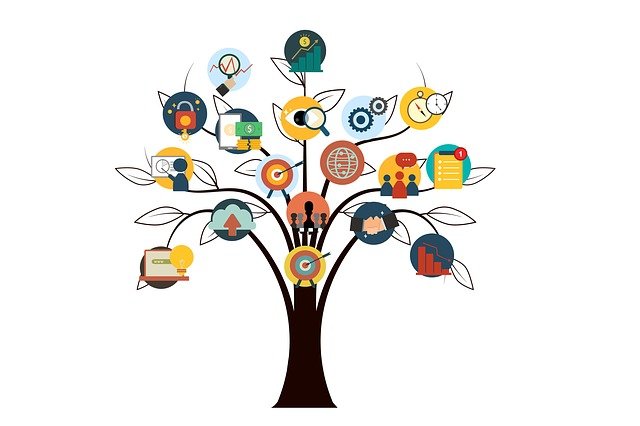
Savvy marketers have always viewed brand awareness as a top priority in their brand management strategy. Whether promoting a new product, revamping an old brand, or entering new territory online or on social media, customers need to know your company’s name and what they do best.
Why do the top companies in the world continue to spend billions on ads every single year? Why do we hear the same taglines and see the same images on an endless loop You’d think we all know the main players in the soft drink and car insurance industries by now, right?
The truth is – it’s never enough. Brand awareness has no end game, and there’s always more ground to cover. With significant market share at stake, it’s an ongoing battle that requires new strategies every year.
With that in mind, it’s time to get to work! Here are the main tried-and-true tactics for raising brand awareness in the current landscape.
Traditional Marketing (Outbound)
Full-page print ads in the Sunday Paper, massive billboards looming over gridlock freeway traffic, and colorful pamphlets that get repeatedly stuffed in your mailbox once a week. What do these all have in common? They are all traditional marketing methods that remain in the modern playbook for raising brand awareness.
Compared to the sleek and efficient tactics we see today, you shouldn’t ignore the power of a bold, physical statement of brand presence in the real world.
From direct sales and print to radio and television, traditional isn’t going anywhere quite yet. The “outbound” approach to marketing has bled into the web, where banner ads and pop-ups have taken over. Google makes it easier than ever to get these campaigns up and running.
Email marketing is an example of a proven outbound technique that still holds up, provided you take a personalized approach and don’t flood inboxes with junk.
“Nothing kills the attention of consumers more than cheesy email blasts they know have been sent to a million people,” said Jeff Goodwin, Senior Director of Marketing at Orgain. “There are services like Cirrus Insight that allow you to send emails from your email domain so the email looks like it came from a real person as opposed to an Automator. You can even personalize the greeting to each customer. This will increase your chances of clicks and lessen the chances of your emails being tossed in the spam or skipped over.”
Master email marketing and gain a major advantage over the competition. Also, don’t forget about referrals, which have always been a make-or-break element of outbound marketing. At the very least, set up a simple referral program to help get the word out about your brand.
Inbound Marketing
Rather than interrupting the user experience with an invasive ad (which most ignore, anyways) inbound marketing flips the script by engaging potential customers with content they actually want to read, watch, and enjoy.
Think about a viral video from an energy drink company or an eye-popping infographic you want to download or share with friends. Even those free eBooks and seminars have a purpose – they are brand-sponsored with the intention of raising awareness and improving perception.
Blogs may be a bit less flashy, but they get the job done by offering genuine, useful insights that readers will return to again and again. This is the basis of many organic SEO playbooks. Guest posting, for example, is a powerful strategy to instantly reach new audiences on an influential blog or publication.
“A great marketing tool is search engine optimization through guest posting,” said Nik Sharma, Founder, and CEO of Sharma Brands. “You can search for blogs and outlets that are popular in your industry/niche and submit a guest post proposal. This blog already needs new content to report in the industry and you will receive backlinks bringing more search hits directly to your site.”
Not every article needs to be a platinum hit. Focus on authority and consistency – that’s what audiences want. Even if a reader bookmarks one post on your company’s blog or news site, the brand name will ring that bell when it comes time to buy.
Social Media Mastery
If you haven’t noticed, social media has won the hearts and minds of the masses, and your company is missing out on big brand awareness opportunities if you skip it.
You don’t need to constantly bombard Facebook and Instagram with new content, but keep a steady stream of activity for your followers to get excited about each week. Find that sweet spot that engages users without overloading their newsfeed.
“Utilizing social media is a great way to build your brand voice,” said Chris Vaughn, Founder, and CEO of Saucey. “It gives your business a personality and a way to use that personality to connect directly with consumers. We use social media to share our blog posts, post polls, and share recipes for the perfect cocktails. The best trick to utilizing social media apps is to keep an eye on the competition. What are they doing that you could be doing better? Research is key!”
It also helps to chime in on conversations with a fun yet authoritative voice and make your brand a part of the ongoing story. Weave new narratives, offer promotions and let your followers feel like they’re part of an exclusive club.
Progress may be slow at first on social, but build that momentum over time and watch your brand awareness snowball into something huge.
Touchpoints and Experiences
We tend to think of branding as the first point of contact and making a strong impression off the bat. In truth, that’s only the beginning. The best brands know that every step of the customer journey needs to optimized, personalized, and memorable – even after the point of purchase.
That’s why brands are not remembered just for their logo or product quality, but for the long list of positive emotions and experiences that customers enjoy along the way.
“A brand is a set of expectations, memories, stories, and relationships that, taken together, account for a consumer’s decision to choose one product or service over another,” said Author, Entrepreneur, and Marketing Guru Seth Godin.
Think about every touchpoint on the customer journey and consider how you can infuse those experiences with the unique impression of your brand. This is a hidden key to brand awareness that will set future companies apart and create huge followings.
Strategic Partnership
There are brands in your niche (or adjacent) that already have loyal customers and strong public perception. If you can link up with them to bring a new product or service to the table, you will leapfrog the competition with ease.
San Francisco-based ice cream company Eclipse Foods did just that, using high-profile collaborations to their advantage.
“Our go-to market strategy was to partner with chefs at restaurants and ice cream shops to help build our brand in a capital-efficient way,” said Eclipse Foods CEO Aylon Steinhart. “We’ve partnered with some of the best chefs in the country which have said things such as ‘this product is truly game-changing’ and how easy it is to work with. Through these partnerships, we’ve been able to build awareness & culinary credibility.”
What is the dream collab for your brand, and how can it be mutually beneficial? Make those connections and work your magic for a big brand awareness boost.
Passion Project Turned Profitable
Brand awareness takes time to build, but the snowball effect is real. Once people start tuning and recognizing your potential as a business, that’s when momentum really picks up.
The most inspiring startup stories feature people who have a burning passion for a particular pursuit. We see examples all the time of individuals turning their hobby into a thriving business, and using unique methods like crowdfunding to get things off the ground.
“I founded Fly By Jing, my modern Sichuan food and pantry brand, in 2017,” said Jing Gao, Founder and CEO of Fly By Jing. “I launched my first product on Kickstarter: Sichuan Chili Crisp, an all-natural chili sauce that I developed as a foundation for a lot of my dishes. It became one of the highest-backed food projects on Kickstarter, with over 1,600 backers helping me exceed my funding goal by 350% in four weeks.”
If you’re someone with a passion for art, cooking, or any type of creative outlet, consider how you can turn it into something that generates money. Brand awareness will be a natural side effect of word-of-mouth online and in the real world.










